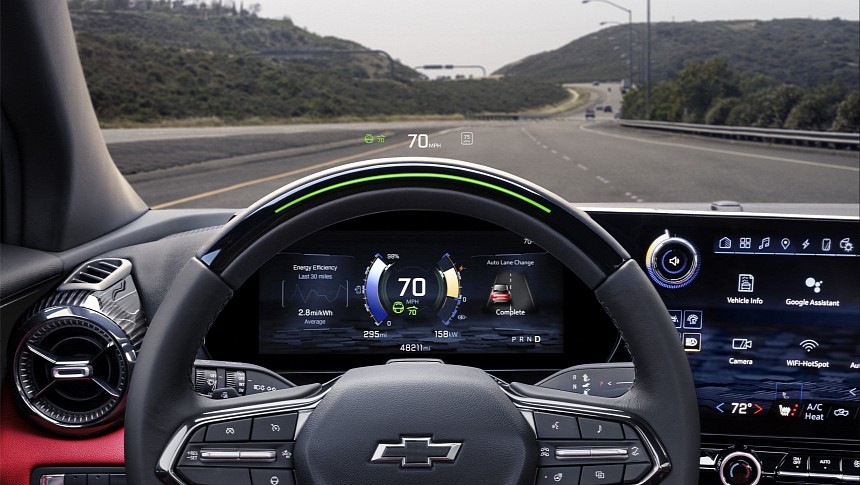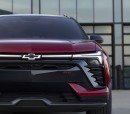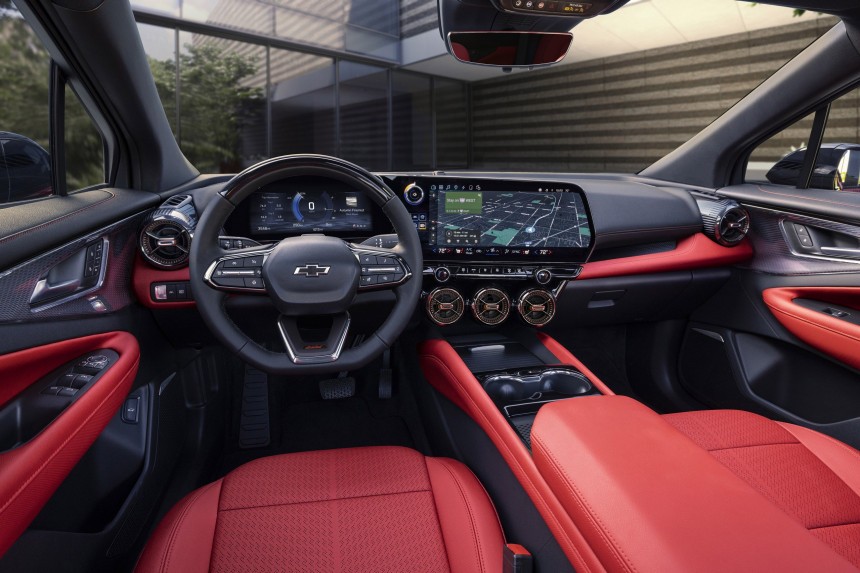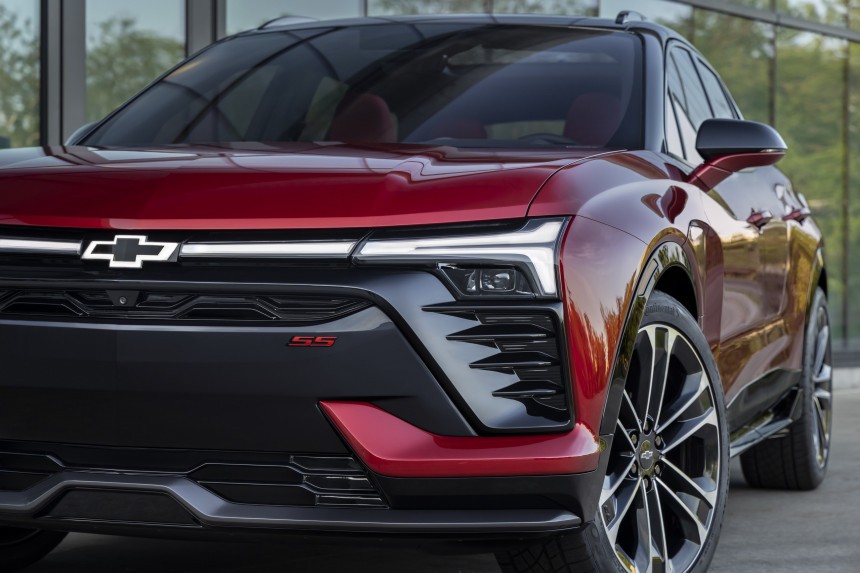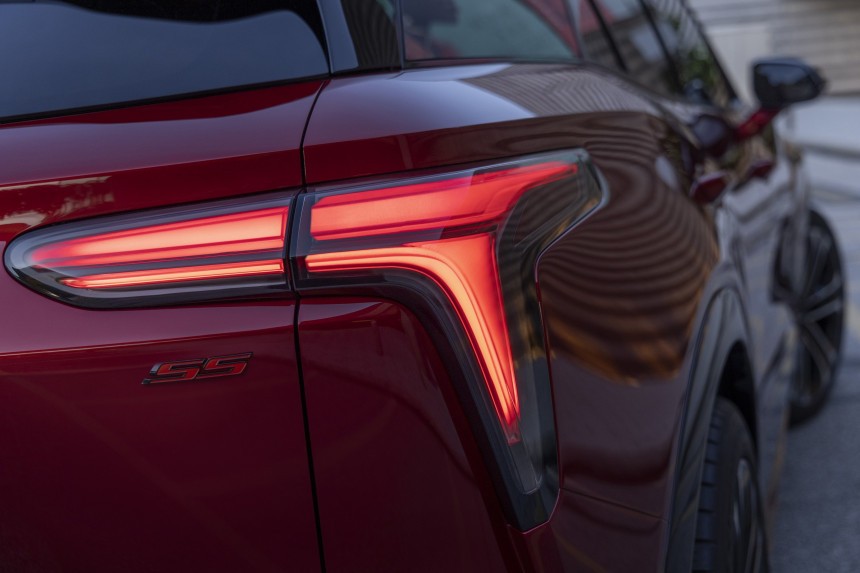Even though the legislation in the United States doesn't yet require some standard advanced safety features for new cars, that doesn't stop automakers from offering them on their vehicles. Thus, General Motors has announced that it will include new systems that aim to reduce crashes by double-digit percentages.
Safety is a big concern for most carmakers, and their research and development departments are working hard to develop new systems to keep drivers and road users safe. Yet, most of these safety nannies are not fitted as standard on all cars but are offered as options. They started being installed standard on vehicles only after lawmakers forced them. That's why your car has seatbelts, ABS, airbags, and so on. Even though these were developed in the '70s and '80s, they became mandatory only later. Still, seatbelts were first and are deemed a revolution in car safety.
The British automaker Jensen installed an anti-locking braking system on its 1966 Interceptor FF. In 1973, Oldsmobile gave airbags to the Toronado, and Chevy put these in special Impalas. Yet, neither the ABS nor those inflating safety devices became widespread until they became mandatory. In Europe, ABS became compulsory in 2004, drastically reducing accident rates. In the United States of America, the NHTSA (National Highway Traffic Safety Administration) mandated this safety system only in 2012. At least it required automakers to install it along with the Electronic Stability Control (ESC).
Since GM has a long history of developing safety gizmos, it tries to lead the pack on the market. As a result, it includes standard features in its 2023 model-year vehicles. John Capp, director of Vehicle Safety Technology, Strategy, and Regulations, stated, "As we look ahead toward a future vision of zero crashes, zero emissions, and zero congestion, these technologies are significant building blocks with proven benefits for reducing common crashes."
In 2022 alone, according to the NSC (National Safety Council), there were more than 46,000 deaths in car accidents. While some states managed to lower their accident rates, in others, these have increased by up to 27% (ahem, Alaska). The safety champion in cutting the numbers is Oklahoma by 25%. Still, there is a 10% decrease in deaths compared to 2021, which is good news. But the target is zero. To reach this, the government should impose new rules for automakers, including more advanced safety features for cars.
All US car manufacturers can equip their vehicles with the latest technologies to prevent accidents or at least limit damages. Nonetheless, as long as these are not mandatory, they will put them on the options list. However, these are pretty pricey, and not all customers are willing to pay a premium to have them. These are standard on most premium brands but only on some models.
Starting this year, GM will add five standard advanced safety features to 98% of its cars. These are the Front Pedestrian Braking, Lane Keep Assist with Lane Departure Warning, Forward Collision Alert, and IntelliBeam auto high-beam control.
While in Europe, there are many standard safety features to make cars safer on the roads, in the US and Canada, these were neglected so the automakers could keep their vehicles priced lower. Still, these systems were offered as options for those who wanted them and were prepared to wait longer for their cars to arrive due to the lack of chips.
Some of these safety features will definitely annoy certain drivers. But on the other hand, these may save those who check their phones while driving in the city or on the highways. But let's get into it and see which these systems are, what they are doing, and which GM cars will have them.
First on the line is the Forward Collision Alert. It uses a radar mounted behind the grille or on the lower part of the bumper. It 'reads' the road ahead, and in case of emergency, will brake the vehicle. If you own a Tesla, you won't find any radar on your car because these use cameras. Sometimes they work, sometimes they don't. So keep your windshield washer reservoir topped up all the time. It is known that cameras need a clear windshield in order to read the roads and hazards on them better.
But just like most automated systems, this can interfere with typical driving situations. For instance, while driving on a winding road, the radar might read the guardrail placed on the side of the road as a vehicle and apply the brakes while entering a corner. This happens because it doesn't know that the driver will steer, and it won't be a pleasant surprise for the one behind the wheel or their passengers.
The same radar is also used for the adaptive cruise control system. It helps the vehicle keep a safe distance from the car in front of it by adjusting the speed. So, if you set the cruise control at, let's say, 70 mph (113 kph), and the vehicle in front of you is doing 50, your car will automatically slow down and keep a safe distance behind. It is one of the best features installed on a daily driver. But it's also a safety system, not just a comfort one.
If the car in front of you will suddenly brake, your vehicle will react faster than you. Usually, a good driver can have a reaction time of eight-tenths a second, while thanks to the radar, your vehicle will react faster than that. And, by the way, if another driver ever rear-ended you, you may guess that their reaction time might have been longer than a second. And that's not unusual.
By adding a camera to the vehicle, the car can recognize a pedestrian and will brake if someone jumps from the sidewalk with their headphones on and their eyes on the phone's screen. This will save their lives, not the driver's. But since every life counts, it is better to have this system onboard. Nevertheless, there are many situations when the driver can only see the pedestrian once it's too late, but the camera does that faster.
One of the most significant issues with these Front Pedestrian Braking systems is that sometimes they don't work correctly. For instance, they don't recognize people on bicycles, skateboards, scooters, or rollerblades occasionally. They also have problems seeing pets, especially if they are small dogs or cats.
Moving on to the GM's standard safety systems list, we reach the Lane Keep Assist. This is both annoying and saving. This one works differently than the AEB (Advanced Emergency Braking) or the adaptive cruise control. It uses a camera to 'read' the lines on the road and prompts the driver if they are swerving left or right without using the turn signal.
This one might be annoying sometimes. If the driver would like to avoid a pothole without using the turn signal, the system will put up some resistance. Sure, with a little bit of muscle, the driver will be able to overcome it. On the plus side, there will be fewer drivers on the road that will forget to use the blinkers. This feature is already very useful for some drivers of some specific brands (you know what these are, don't you?).
Honda was the first automaker to introduce the Lane Keep Assist System (LKAS) back in 2003. This invention helped many drivers while annoying others, obviously. But the Japanese car marque's idea also challenged other companies to develop similar systems. Mind you, this is yet to be a standard feature on all vehicles since it's optional. But GM chose to install it anyway just to keep its customers happy.
Finally, there is the IntelliBeam system, which automatically switches between high and low beams. This is a great safety feature during nighttime driving, especially on a winding road. Suppose the driver will suddenly encounters oncoming traffic. In that case, the intelligent lighting system will do the switch for them so that other fellow drivers won't suffer. It also works if there's a car in front so that the high beam won't blind them through their rearview mirrors.
This system is one of the best upgrades for any car. But, surprisingly, it is not a novelty on the market. In 1952, Oldsmobile and Cadillac made the Autronic Eye system. This was the world's first auto-dimming system. Yet, it worked only for the oncoming traffic, and it couldn't detect the taillights of the vehicles in front. But hey, that was more than seven decades ago!
Still, customers who would like to have more safety features can also order adaptive headlights. This is an even more useful feature, and it's not new, either. Let's remember that the 1948 Tucker had it. In Europe, Citroen's DS also featured such a system. Even though those were mechanical, with cables and rollers, they worked well.
Audi was the first automaker that installed a modern adaptive headlight system on its flagship model, the A8, in 2006. It was a system that directed the headlights' beams toward a corner. Thus drivers could see faster what's there compared with a car fitted with regular lights.
General Motors said that it will apply these five systems on most of its cars that are already in production. Moreover specifically, they will be introduced to the Blazer EV and Equinox EV. Next time you'll order a Chevy, it will likely have these safety features. GM didn't say which of its cars won't come equipped with these.
Thus, while we do expect to see these gizmos on its pricier vehicles, they will still be present on its high-volume cars that GM builds for the daily commute.
The British automaker Jensen installed an anti-locking braking system on its 1966 Interceptor FF. In 1973, Oldsmobile gave airbags to the Toronado, and Chevy put these in special Impalas. Yet, neither the ABS nor those inflating safety devices became widespread until they became mandatory. In Europe, ABS became compulsory in 2004, drastically reducing accident rates. In the United States of America, the NHTSA (National Highway Traffic Safety Administration) mandated this safety system only in 2012. At least it required automakers to install it along with the Electronic Stability Control (ESC).
Since GM has a long history of developing safety gizmos, it tries to lead the pack on the market. As a result, it includes standard features in its 2023 model-year vehicles. John Capp, director of Vehicle Safety Technology, Strategy, and Regulations, stated, "As we look ahead toward a future vision of zero crashes, zero emissions, and zero congestion, these technologies are significant building blocks with proven benefits for reducing common crashes."
In 2022 alone, according to the NSC (National Safety Council), there were more than 46,000 deaths in car accidents. While some states managed to lower their accident rates, in others, these have increased by up to 27% (ahem, Alaska). The safety champion in cutting the numbers is Oklahoma by 25%. Still, there is a 10% decrease in deaths compared to 2021, which is good news. But the target is zero. To reach this, the government should impose new rules for automakers, including more advanced safety features for cars.
Starting this year, GM will add five standard advanced safety features to 98% of its cars. These are the Front Pedestrian Braking, Lane Keep Assist with Lane Departure Warning, Forward Collision Alert, and IntelliBeam auto high-beam control.
While in Europe, there are many standard safety features to make cars safer on the roads, in the US and Canada, these were neglected so the automakers could keep their vehicles priced lower. Still, these systems were offered as options for those who wanted them and were prepared to wait longer for their cars to arrive due to the lack of chips.
Some of these safety features will definitely annoy certain drivers. But on the other hand, these may save those who check their phones while driving in the city or on the highways. But let's get into it and see which these systems are, what they are doing, and which GM cars will have them.
But just like most automated systems, this can interfere with typical driving situations. For instance, while driving on a winding road, the radar might read the guardrail placed on the side of the road as a vehicle and apply the brakes while entering a corner. This happens because it doesn't know that the driver will steer, and it won't be a pleasant surprise for the one behind the wheel or their passengers.
The same radar is also used for the adaptive cruise control system. It helps the vehicle keep a safe distance from the car in front of it by adjusting the speed. So, if you set the cruise control at, let's say, 70 mph (113 kph), and the vehicle in front of you is doing 50, your car will automatically slow down and keep a safe distance behind. It is one of the best features installed on a daily driver. But it's also a safety system, not just a comfort one.
If the car in front of you will suddenly brake, your vehicle will react faster than you. Usually, a good driver can have a reaction time of eight-tenths a second, while thanks to the radar, your vehicle will react faster than that. And, by the way, if another driver ever rear-ended you, you may guess that their reaction time might have been longer than a second. And that's not unusual.
By adding a camera to the vehicle, the car can recognize a pedestrian and will brake if someone jumps from the sidewalk with their headphones on and their eyes on the phone's screen. This will save their lives, not the driver's. But since every life counts, it is better to have this system onboard. Nevertheless, there are many situations when the driver can only see the pedestrian once it's too late, but the camera does that faster.
Moving on to the GM's standard safety systems list, we reach the Lane Keep Assist. This is both annoying and saving. This one works differently than the AEB (Advanced Emergency Braking) or the adaptive cruise control. It uses a camera to 'read' the lines on the road and prompts the driver if they are swerving left or right without using the turn signal.
This one might be annoying sometimes. If the driver would like to avoid a pothole without using the turn signal, the system will put up some resistance. Sure, with a little bit of muscle, the driver will be able to overcome it. On the plus side, there will be fewer drivers on the road that will forget to use the blinkers. This feature is already very useful for some drivers of some specific brands (you know what these are, don't you?).
Honda was the first automaker to introduce the Lane Keep Assist System (LKAS) back in 2003. This invention helped many drivers while annoying others, obviously. But the Japanese car marque's idea also challenged other companies to develop similar systems. Mind you, this is yet to be a standard feature on all vehicles since it's optional. But GM chose to install it anyway just to keep its customers happy.
Finally, there is the IntelliBeam system, which automatically switches between high and low beams. This is a great safety feature during nighttime driving, especially on a winding road. Suppose the driver will suddenly encounters oncoming traffic. In that case, the intelligent lighting system will do the switch for them so that other fellow drivers won't suffer. It also works if there's a car in front so that the high beam won't blind them through their rearview mirrors.
Still, customers who would like to have more safety features can also order adaptive headlights. This is an even more useful feature, and it's not new, either. Let's remember that the 1948 Tucker had it. In Europe, Citroen's DS also featured such a system. Even though those were mechanical, with cables and rollers, they worked well.
Audi was the first automaker that installed a modern adaptive headlight system on its flagship model, the A8, in 2006. It was a system that directed the headlights' beams toward a corner. Thus drivers could see faster what's there compared with a car fitted with regular lights.
General Motors said that it will apply these five systems on most of its cars that are already in production. Moreover specifically, they will be introduced to the Blazer EV and Equinox EV. Next time you'll order a Chevy, it will likely have these safety features. GM didn't say which of its cars won't come equipped with these.
Thus, while we do expect to see these gizmos on its pricier vehicles, they will still be present on its high-volume cars that GM builds for the daily commute.
